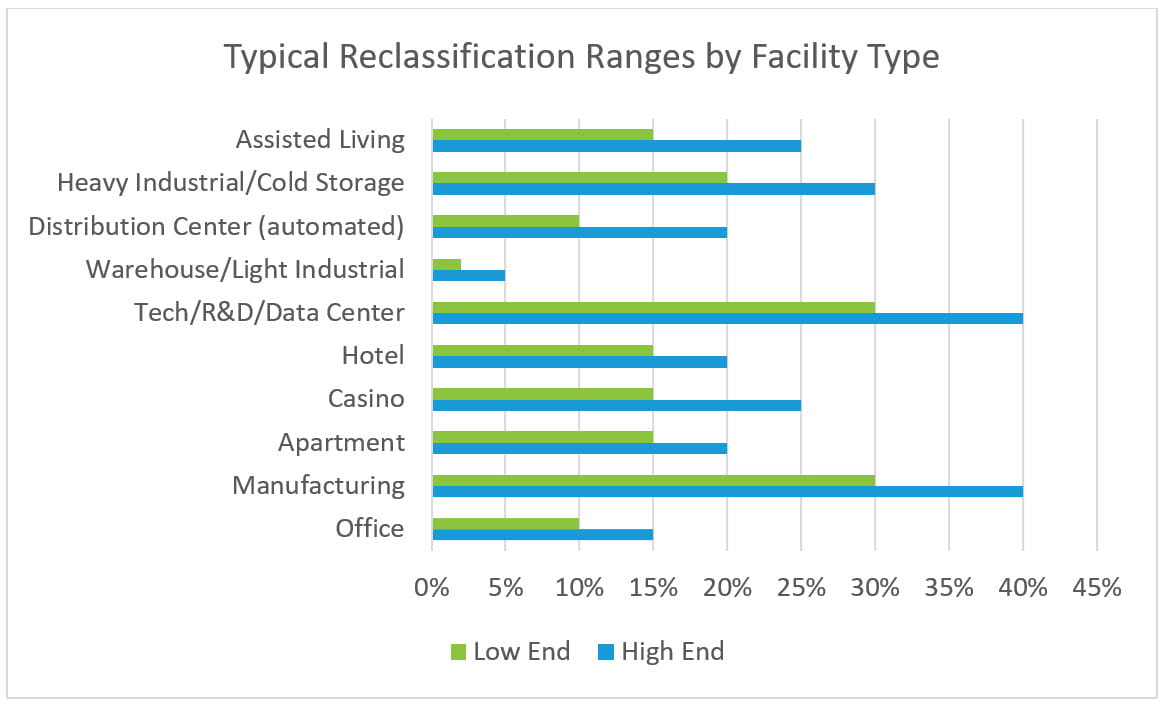Maximize Tax Deductions and Increase Cash Flow With Cost Segregation
Maximize Tax Deductions and Increase Cash Flow With Cost Segregation
What is a cost segregation study?
Cost segregation studies are the analysis and allocation, or re-allocation, of construction or acquisition costs among various building systems and components. Most commonly, cost segregation studies are performed to identify and quantify building and site components eligible for accelerated depreciation methods for federal income tax purposes.
To calculate depreciation for federal income tax purposes, taxpayers must use the correct method and proper recovery period for each asset owned. Real estate, whether acquired or constructed, consists of numerous asset types with different recovery periods. Property is typically separated into individual components or asset groups having the same recovery periods and placed-in-service dates to properly compute depreciation. When the actual cost of each individual component is available, this procedure is simple. When only lump-sum costs are available, however, construction cost estimating work is required to “segregate” costs into individual components of property.
Benefits
Cost segregation studies for federal income tax purposes provide significant tax benefits by using shorter recovery periods and accelerated depreciation methods (including bonus depreciation) for computing depreciation deductions.
Cost segregation analyses typically reclassify 10% to 40% of the overall construction or acquisition cost to shorter recovery periods. The reclassification percentage is driven primarily by property type, as shown in the table below.

As part of engagement scoping, Stout professionals calculate the estimated benefit to be achieved from implementing a cost segregation analysis.
Our Services
Acquired Real Estate
An acquired building can be segregated into components and the depreciation deductions can be accelerated by applying a cost segregation analysis. Stout professionals develop a detailed cost model of the building and site improvements to appropriately allocate FMV costs to real and personal property assets.
Constructed Real Estate
Cost segregation studies of new construction projects include analysis of new buildings or renovation/expansion projects at existing buildings. Through detailed analysis of the construction costs and drawings, Stout professionals identify and segregate costs of assets eligible for accelerated depreciation.
Leasehold Improvements
We also perform cost segregation analyses of assets owned by tenants or landlords under a leasehold improvement construction scenario. Stout professionals review lease terms, including tenant allowances, to provide an appropriate allocation of real and personal property based on lessor/lessee ownership.
Our Approach
Typically, our cost segregation projects include the following steps:
- Meet with client team to develop a complete understanding of project facts, establish information gathering protocols, and refine Stout deliverables/output formats
- Review all available project data, including construction cost detail and appraisals
- Analyze construction drawings to identify and determine quantities of personal property and land improvement assets
- Inspect the site to verify physical aspects/condition of the property, confirm assets identified on drawings, and/or perform physical measurements
- Utilize construction industry pricing manuals to compute total costs of individual personal property and land improvement assets
- Develop client deliverables, including electronic asset schedules and a written report detailing methodology and procedures
Stout’s cost segregation practices and methodologies conform to the IRS Cost Segregation Audit Techniques Guide, and our professionals have successfully defended their work before the IRS.
Who We Serve
Cost segregation services can provide meaningful benefit to taxpayers in all industries, including:
- Real estate (including REITs)
- Entertainment (casinos, theme parks, theaters, stadiums, arenas, etc.)
- Hospitality (hotels, spas, restaurants, etc.)
- Retail (including restaurants)
- Manufacturing
- Residential rental (including apartments and assisted living/nursing homes)





